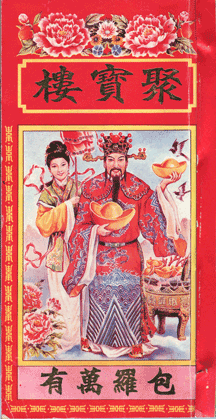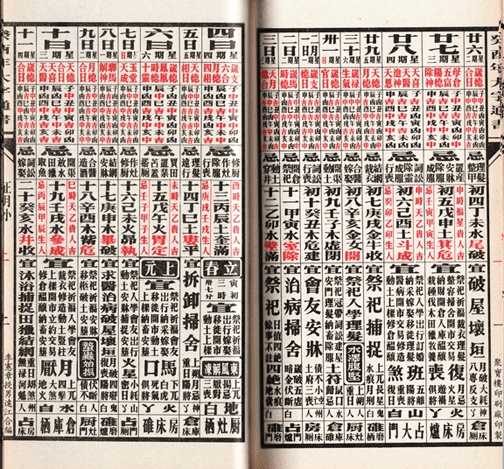The Endurance of the Daybook
CASE 5: Popular Belief in Ancient China
For the next two thousand years, texts similar to those found in the third century BCE to the second century CE Daybooks continued to exist in Chinese society. Before the Song Dynasty (960-1279 CE), people wrote out hand copies. From the Song dynasty onward, printing became the most common way to spread knowledge. Later versions of the Daybookcontained information on the progress of agricultural seasons and various nodal points for key agricultural activities such as the breaking of the ground, plowing, sowing, harvesting, and so on. The inclusion of this agricultural information eventually led the government to publish an official, standardized version of the Daybook so that people throughout China could use it to anticipate seasonal changes and conduct their farming activities. The famous imperial encyclopedia complied during the reign of the Qing dynasty emperor Qian Long (1736-1795), the Siku quanshu 四庫全書, or The Imperial Collection of Four Treasuries provides an example of this. As its title suggests, this vast repository of texts and knowledge is divided into four sections: History, Poetry, Philosophy, and Literature. It contains a genre of texts entitled the “Book for Harmonizing with the Seasons and Distinguishing the Directions,” many of which are very close to those found in the Daybooks of Shuihudi.
Similar “Daybooks” continue to be published in large quantity by farmers’ associations, businesses, and even banks in present-day Taiwan and Hong Kong.

The first chapter of these contemporary Daybooks is called “The Farmer’s Calendar” or “Yellow Calendar.” The material in these chapters is almost identical to the “Qin Chu” found in the Daybook of Shuihudi. A major difference is that, to accommodate modern concerns, predictions on the performance of the stock market are also included. Other adaptations to modern life include such things as an introduction to the English alphabet and an explanation of the scientific causes of eclipses.



